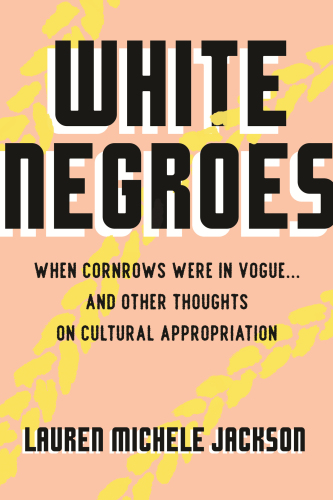
White Negroes
When Cornrows Were in Vogue ... and Other Thoughts on Cultural Appropriation
فرمت کتاب
ebook
تاریخ انتشار
2019
نویسنده
Lauren Michele Jacksonناشر
Beacon Pressشابک
9780807011980
کتاب های مرتبط
- اطلاعات
- نقد و بررسی
- دیدگاه کاربران
نقد و بررسی

November 1, 2019
In this debut work of nonfiction, with a title borrowed from a 1957 essay by Norman Mailer, Jackson (English, Northwestern Univ.) explores the long roots and far reaching effects of cultural appropriation and its ties to racial inequity through a litany of illustrations. With modern case studies showing instances of cultural appropriation in everything from music, art, and fashion to food, entrepreneurship, and activism, Jackson argues that this deeply ingrained phenomenon is stealing wealth from black Americans to benefit white Americans. In explaining how cultural appropriation has become commonplace, Jackson reveals the serious repercussions that can result. Whether through a popular overnight meme or YouTube videos gone viral, Jackson tracks how ideas from black creators have infiltrated American society--but not to the financial benefit of their creators, who get lost in the shadow of the limelight their appropriators take over. VERDICT A thoughtful addition to social science and African American studies collections.--Venessa Hughes, Denver
Copyright 2019 Library Journal, LLC Used with permission.

September 2, 2019
Northwestern University professor Jackson’s insightful debut essay collection takes on cultural appropriation—particularly of black innovation by white celebrities, artists, and entrepreneurs—through the lens of power dynamics, identifying it as a process by which “society’s imbalances are exacerbated and inequalities prolonged.” In the realm of pop culture, she analyzes the pursuit of “urban” sexual wildness by Britney Spears and Miley Cyrus, the aesthetic but not economic investment of the Kardashians in black fashion, and Paula Deen’s fetishistic presentation of Southern food alongside explicit racism. Her exploration of the art world juxtaposes the public reaction to Rachel Dolezal, made famous by her “impulse to inhabit blackness,” with accusations against institutions such as the Whitney Biennial, which she asserts ignores black artists but treats depictions of antiblack violence as edgy and relevant. She identifies toxic white resentment of black success in the recent viral videos of white people calling the police on black people (often children) for using public pools, having lemonade stands, or barbecuing in parks. Jackson is uncompromising in her bold language, palpable in her outrage; she keeps her razor-sharp analysis in an accessible but academic register. She both calls out the damage done by appropriative and oppressive behavior and calls in white readers to take part in valuing black contributions in a way that helps black lives. (Nov.)Correction: An earlier version of this review misidentified the book's author as a college instructor.

October 1, 2019
A literary scholar examines the many ways in which African American influences are incorporated, without acknowledgment or thanks, into the white cultural mainstream. Cultural appropriation, writes Jackson (English and African American Studies/Northwestern Univ.), "gets a bad rap." Rap, for instance, borrows from the styles of earlier generations--soul, disco, funk, even gospel--but includes the likes of Billy Joel and Paul Simon in its DNA. Appropriation, she writes, "is everywhere, and it is inevitable," though it is also a matter of power as much as artistic license: The culturally dominant group gets away with borrowing fashions, musical styles, and language, developing "black aesthetics without black people." In a lucid explication of the work of appropriation in music, she examines borrowings not just by white artists such as Britney Spears, but also members of minority populations such as Jennifer Lopez, who, by Jackson's account, lifted liberally from a less-known artist named Ashanti. It's Lopez's good luck that the borrowing, including the passing insertion of the N-word, took place in a time when "the internet wasn't then what the internet is now, and time forgives all slurs." Pop star Pink took a different course, gradually shedding any blackness in her sound, even as Miley Cyrus dropped her white-pop teen persona to embrace the hip-hop world and Khloé Kardashian did her hair up in cornrows and called herself a "Bantu babe." The author ranges across a broad field of reference, writing of the appropriation of the Southern-ism "chile" (child, that is) by means of the TV show Real Housewives of Atlanta and the culinary borrowings of Paula Deen, "white Mammy, plumping America one fried delicacy at a time," who got in trouble not for her lifting recipes but instead for using the N-word. Jackson is evenhanded throughout, though there's a welcome fire to her discussion, as when she writes, "America is addicted to hurting black people. America is addicted to watching itself hurt black people." A revelatory, well-argued work of cultural criticism.
COPYRIGHT(2019) Kirkus Reviews, ALL RIGHTS RESERVED.

























دیدگاه کاربران